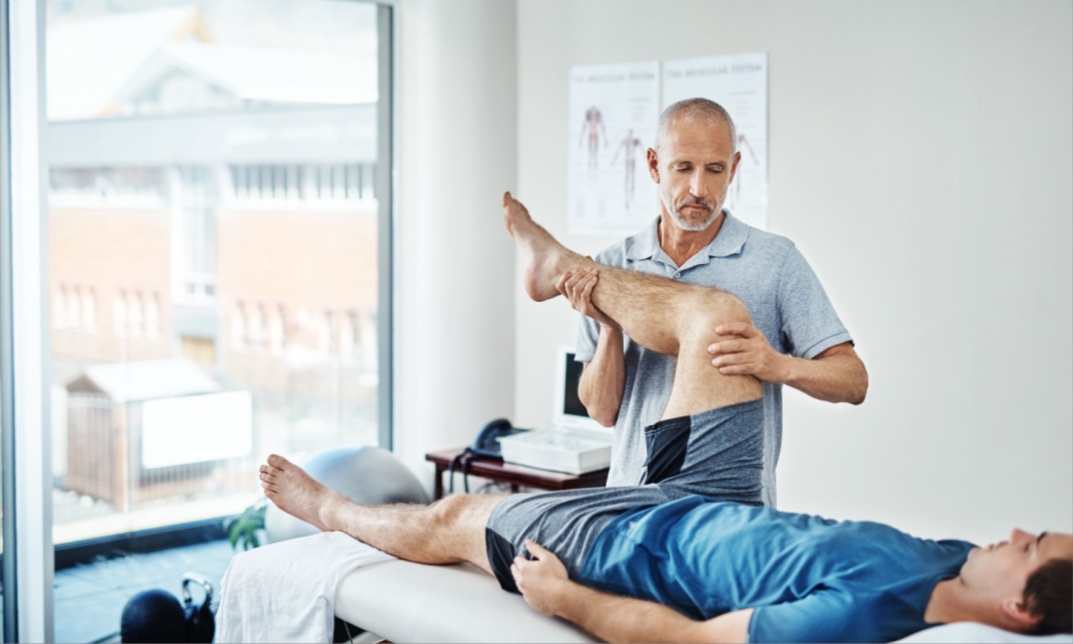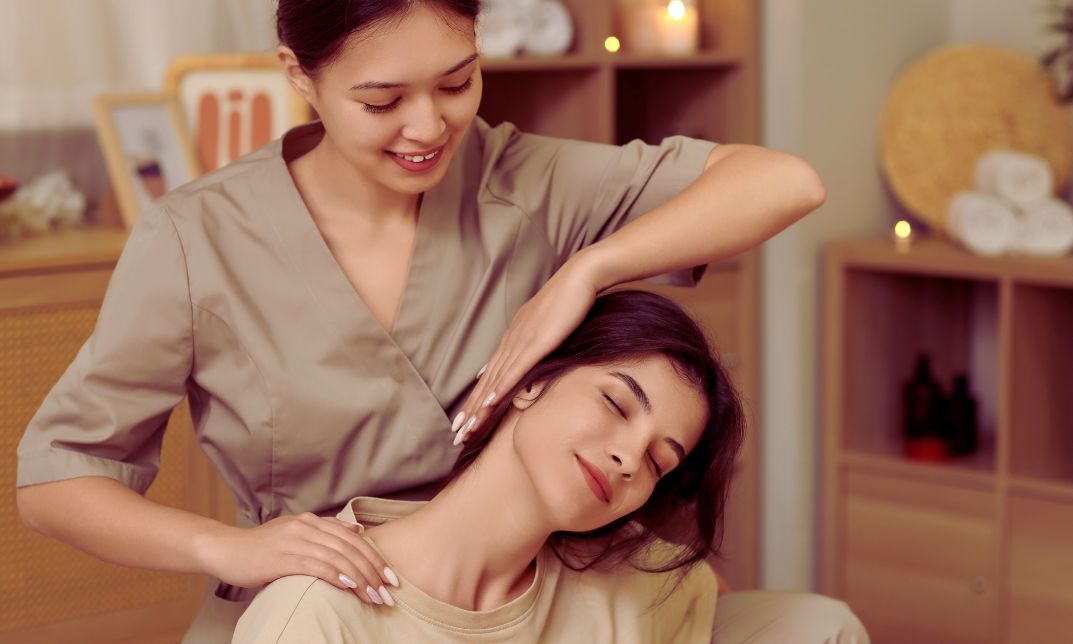No products in the basket.
Ever wondered how long does threading last, the short answer is usually two to four weeks — but it depends on you. Threading removes hair straight from the root, so the results last longer than shaving and leave your skin smooth and clean.
In this guide, we’ll walk through what threading is, how long results typically last for each area, what can affect regrowth, and simple ways to make your smooth skin last even longer. Whether you’re new to threading or just want to keep your brows in shape for weeks, this will help you know exactly what to expect.
What Is Threading and How Does It Work?
Threading is a hair removal technique that uses a thin, twisted cotton thread to gently lift hairs out from the follicle, right at the root. The thread is rolled over the skin in small, precise motions, catching multiple hairs at once and pulling them out cleanly.
Because the hair is removed from the root — not just cut at the surface — the results last much longer than shaving. You can usually expect similar longevity to waxing, but with a bit more precision and less irritation, especially on delicate areas like the eyebrows, upper lip, and face.
It’s also completely natural and chemical-free, which makes it a great option for people with sensitive skin. Whether you’re shaping brows or removing fine facial hair, threading gives a smooth, defined finish without the mess of wax or creams.
To learn more about why this method is becoming so popular and how to care for your skin after, check out Threading: The New Trend in Facial Hair Removal — a helpful guide that dives deeper into the benefits, techniques, and lasting results of threading.
How Long Does Threading Last on Average?
How long threading lasts really depends on your hair growth, but here’s a quick guide for what most people notice:
- Eyebrows: about 3 to 4 weeks before new hairs start to show.
- Upper lip: around 2 to 3 weeks, since hair there tends to grow faster.
- Full face: usually 3 to 6 weeks, depending on your growth rate and skincare routine.
Everyone’s hair grows at a different pace, but most people find they can enjoy smooth, clean skin for weeks before needing another session.
Factors That Affect How Long Threading Lasts
- Your Hair Growth Speed: Everyone’s hair grows at its own pace. If your hair tends to grow fast, you might notice little regrowth within a couple of weeks. Slower growth? You’ll enjoy that smooth skin for longer.
- Hormones and Age: Changes in hormones — like during puberty, pregnancy, or menopause — can affect how quickly your hair grows back. Younger skin usually sees faster regrowth, while it may slow down a bit with age.
- Medications: Some medications, especially those that influence hormones or skin health, can make hair grow faster or slower. If you notice a change after starting new meds, this might be why.
- Skincare Routine: Exfoliating too soon after threading can irritate the skin and speed up regrowth. On the flip side, regular gentle exfoliation (after 48–72 hours) helps prevent ingrown hairs and keeps your skin looking smooth longer.
- Aftercare: How you treat your skin post-threading really matters. Keeping the area clean, moisturised, and protected from heavy oils or makeup helps extend results. Skip harsh scrubs or hot showers for the first day — your skin needs time to calm down.
Threading vs Waxing and Shaving: Which Lasts Longer?
Let’s break it down simply.
Threading and waxing both pull hair out from the root, which means the hair takes longer to grow back. On average, you can feel smooth skin for about 3 to 6 weeks before you start seeing new growth. Shaving, however, only cuts the hair at the surface. That’s why you’ll often notice stubble again in just 1 to 3 days — it doesn’t remove the root, so the hair grows back faster and can feel coarse.
If you want results that last and don’t mind a bit of upkeep every few weeks, threading or waxing is the way to go. But if you need a quick fix and don’t mind more frequent touch-ups, shaving works fine for short-term smoothness.
How to Make Your Threading Results Last Longer
If you love that fresh, smooth feeling after threading, a few simple habits can help you keep it going for weeks. It’s all about caring for your skin and letting your hair grow evenly between sessions. Here’s what works best:
- Don’t tweeze between visits – Leave stray hairs alone so your next threading appointment keeps a clean, even shape.
- Exfoliate gently after 48–72 hours – Once your skin has calmed down, light exfoliation helps prevent ingrown hairs and keeps the area smooth.
- Keep skin hydrated – Use a light moisturiser daily to stop dryness and maintain that soft, healthy look.
- Avoid heavy oils or thick creams – They can clog pores and make skin feel greasy, especially right after threading.
- Use daily SPF – Freshly threaded skin is more sensitive to sunlight, so sunscreen helps protect it from irritation or redness.
- Book regular threading sessions – Staying consistent keeps regrowth manageable and helps your results last longer each time.
How Often Should You Get Threading Done?
How often you should get threading really depends on how fast your hair grows and the area you’re treating. Most people find that eyebrows look best when threaded every 3 to 5 weeks, as this keeps the shape tidy without overplucking. The upper lip usually needs attention a bit sooner, around every 2 to 4 weeks, since the hair there grows faster. For a full-face threading, every 4 to 6 weeks is a good rhythm to maintain smooth, even skin. Over time, you’ll notice that regular threading can make regrowth finer and slower, so you might even be able to stretch your appointments further apart.
Does Threading Make Hair Grow Back Thicker or Slower?
No, threading doesn’t make your hair grow back thicker. It removes each hair from the root, not just the surface, so it doesn’t affect how your hair grows or how thick it is. In fact, with regular threading, many people find the opposite happens — the hair often grows back finer and softer because the follicle weakens a little over time. So instead of coming back darker or stronger, the regrowth usually looks lighter and less noticeable.
Aftercare Tips to Keep Skin Smooth and Hair-Free
After threading, your skin needs a little time to settle down — it’s freshly cleaned and more sensitive than usual. Taking care of it properly right after your appointment helps you avoid redness, irritation, or breakouts and keeps that smooth feeling for longer.
- Avoid makeup for the first 24 hours
- Skip hot showers, saunas, and steam rooms
- Hold off on heavy workouts to prevent sweat irritation
- Stay away from sunbeds or direct sunlight
- Apply aloe vera or a soothing gel to calm the skin
- Always use SPF when going outdoors
Final Thoughts: How Long Threading Really Lasts and When to Book Your Next Appointment
Threading is one of the easiest ways to keep your skin smoother and your brows perfectly shaped — and the best part is, it lasts. Most people enjoy results for around 3 to 4 weeks before any noticeable regrowth. If your hair grows faster, you might need a touch-up sooner; if it’s slower, you can stretch it out a little longer.
To make the most of your results, follow your aftercare tips, avoid tweezing between visits, and keep your skin hydrated. And if you’ve ever thought about turning your threading skills into a career, the Level 2 Award in Provide Threading Course from Training Tale is a great place to start. It’s designed to help you learn professional techniques, build confidence, and offer expert threading services that clients will love.
FAQs: Threading (Longevity & Care)
1. What is the downside of threading?
- You might get mild redness or slight irritation right after, but it fades within a few hours.
2. How long do face threads last?
- Usually 3–6 weeks, depending on your hair growth speed and skin type.
3. Does threading last longer than shaving?
- Yes — threading lasts 3–6 weeks, while shaving lasts only 1–3 days.
4. Can threading get stubble?
- No, because it removes hair from the root, not the surface.
5. What are the downsides of eyebrow threading?
- Temporary redness or small bumps that calm down quickly with aloe or a soothing gel.
6. Should I thread my chin hair?
- Yes, it’s safe and works well for both fine and coarse hair.
7. Why shouldn’t you pluck your chin hair?
- Plucking can cause ingrown hairs and irritation — threading is gentler and more even.
8. Do dermatologists recommend threading?
- Yes, most do, as it’s chemical-free and gentle on most skin types.
9. Does hair grow thicker after threading?
- No — it often grows back finer and softer over time.





